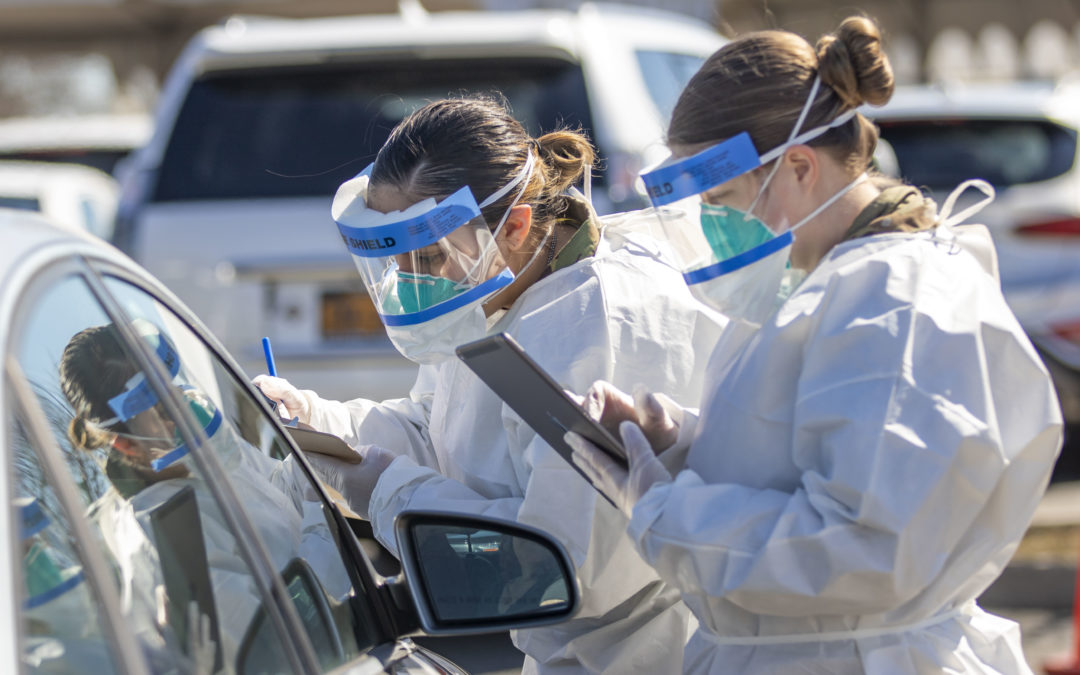By Adam Czerwiński
Testing for the coronavirus has become one of the hottest themes of political and medical debate in Poland. Are we testing enough, or should we be testing more?
Those who think that the intensity of testing is insufficient point out that Poland runs fewer tests per million inhabitants than most other EU countries. As of 8 April, Poland had conducted 99,284 tests. The comparison seems to suggest that Poland does not test enough, presumably due to low testing capacity.
Poland has carried out the second lowest number of coronavirus tests per million inhabitants among EU countries, according to @Worldometers data presented by @oko_press.
Via: https://t.co/BLeJBVbHmd pic.twitter.com/6ifrBMoaw2
— Notes from Poland ?? (@notesfrompoland) April 5, 2020
To this, opponents respond that the low ratio of tests to population is to be expected, since the prevalence of COVID-19 in Poland is one of the lowest in the EU. Fewer cases simply warrant fewer tests. As a matter of fact, as a ratio of tests to confirmed cases, we test a lot.
The number of tests per confirmed case exceeds 20 in Poland, which is higher than in many European countries, including Italy and the UK, with around five tests for each confirmed case, Switzerland, with over seven, and Austria, with nine. Few countries test more, with exceptions such as the 30 tests per case in Lithuania, which has a population of under three million people.
Some rebut that the ratio may be inflated because medical workers with no symptoms constitute a relatively high proportion of the people tested. While others who advocate for more testing take the argument further: pushing for mass coronavirus screening to isolate those with positive results, while allowing all others to avoid further restrictions on daily activities.
However, feasibility aside, there is a case to be made for why mass coronavirus screening programmes could currently bring more harm than good.
Mass screening in numbers
Results of diagnostic tests are never 100% correct. In a certain proportion of cases a test of an infected individual may come out negative. Similarly, a test on a healthy person might give a positive result.
From a statistical standpoint, a diagnostic test can have four distinctive results: true positive (an infected individual with a positive result), true negative (a healthy individual with a negative result), false negative (an infected individual with a negative result), and false positive (a healthy individual with a positive result).
The proportion of results in each of these four categories is used to calculate performance statistics, which describe how well a test separates the actual sick from the actual healthy.
Two such statistics are used most prevalently: sensitivity (true positive rate), i.e. the probability that a test of an infected individual will come out positive, and specificity (true negative rate), i.e. the probability that a test of a healthy individual will come out negative.
Why is this technical gibberish important?
Because the problem with mass screening is that if prevalence of a disease is low, then even if the test has high specificity (high probability that healthy individuals will test negative), the majority of people with positive results will actually also be healthy.
As a simplified example, let’s assume that we had the capacity to test every person in the EU right now. Let’s also assume that prevalence of coronavirus is 2 per 1000 people (official prevalence is lower than 1 per 1000 people, but we could be doing a poor job of identifying the infected).
The test we use would have to be relatively easy to perform and inexpensive, like the ones used extensively in South Korea. So let’s use the BioMedics COVID-19 IgM/IgG Rapid test, which can be done in 15 minutes and does not require lab equipment. According to the manufacturer, the sensitivity (true positive rate) of this test is 88.66%, while specificity (true negative rate) is 90.63%.
What would be the result of such an experiment?
Let’s go through it step by step. If the prevalence is 2 per 1000 people, then among 445.25 million EU citizens, some 890,000 will be infected. Among these infected people, we would expect 790,000 correctly identified positive results (true positives) and approximately 100,000 incorrectly identified negative results (false negatives).
The number of healthy individuals is 444.36 million. In this group, our test of 90.63% specificity will identify 400.37 million people correctly as healthy (true negatives) and some 43.99 million incorrectly as infected (false positives).
In total then, we have 44.78 million positive results, of which only 790,000 are truly infected. This means that for every 100 people who tested positive, only two will actually be sick.
The negatives of false positives
After all, it should be better to isolate a healthy person as a precaution than to let someone who is infected slip past untreated.
However, for one this could encumber a number of institutions. Every false positive would be evaluated by a professional and possibly retested in hospital (e.g. a superior RT-PCR test). Sanitary services would regularly monitor their health status during quarantine and law enforcement would verify whether they obey the rules of quarantine. Such institutions are often already working at full capacity, and additional swathes of false positive cases would greatly add to their work.
Second, screening would likely have to be repeated after several days, since previously healthy people might contract the disease in the meantime. And third, a high frequency of false positives could skew the epidemiological data, such as mortality or hospitalisation rates, and give a false sense of confidence to both the decision makers and the general population.
Finally, people with false positive results could, after some time, assume that since they already had the disease, they are now immune and do not have to comply with social distancing and other restrictions, which would inevitably only hasten the spread of the epidemic.
These arguments do not mean, however, that we should not test at all. Indeed, we really should. We should definitely be testing those with symptoms consistent with the coronavirus disease, as well as health workers who could unknowingly be carriers. We should consider testing people who were in close contact with an infected person, and perhaps perform screening in specific, vulnerable groups.
Simply, the idea of mass screening should be treated with caution. The low prevalence of coronavirus in Poland paired with inaccuracy of quick coronavirus tests means that mass screening programmes, even if we had the capacity to conduct them, could have a number of notable downsides.
Main image credit: The National Guard/Flickr (under CC BY 2.0)





















